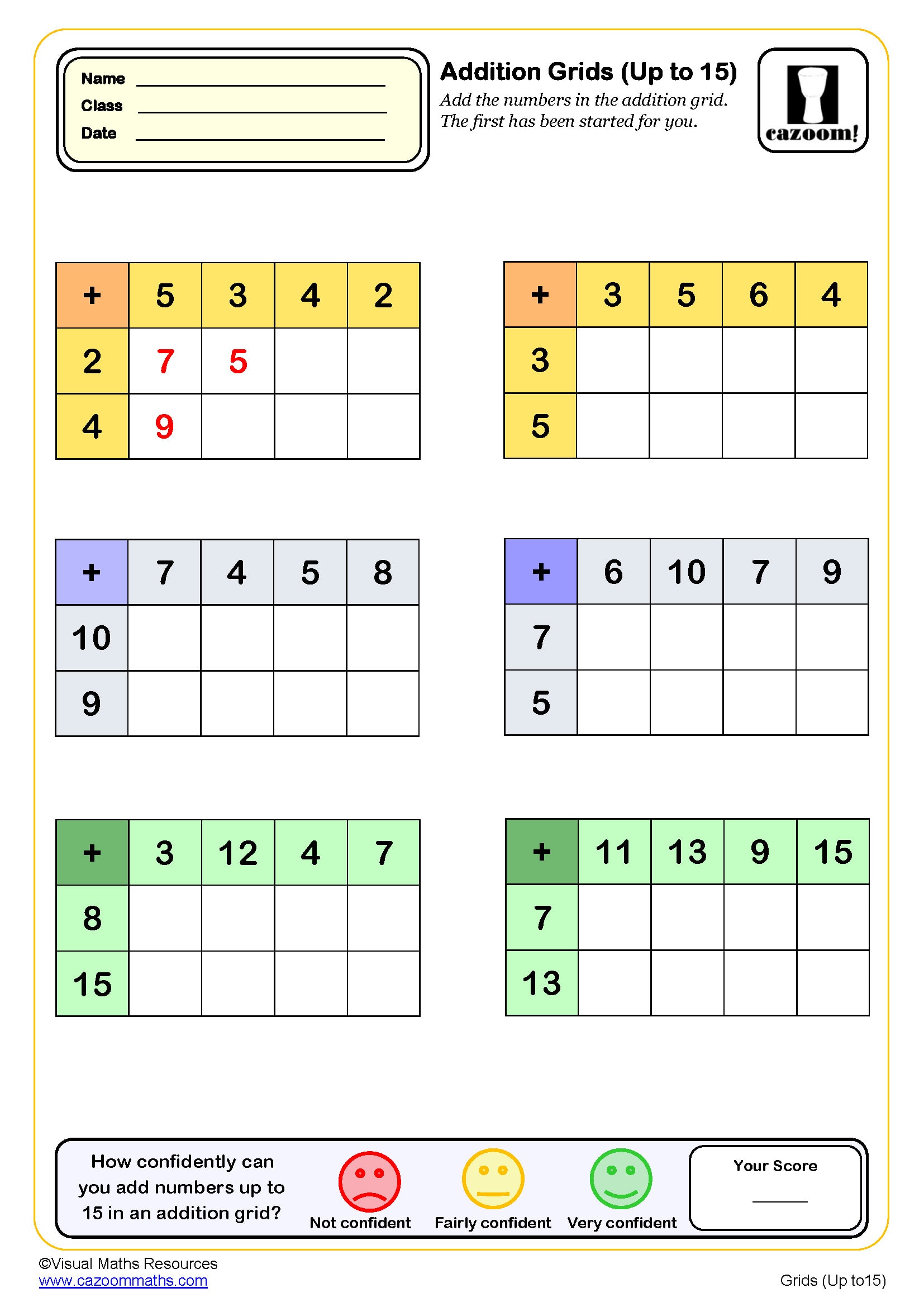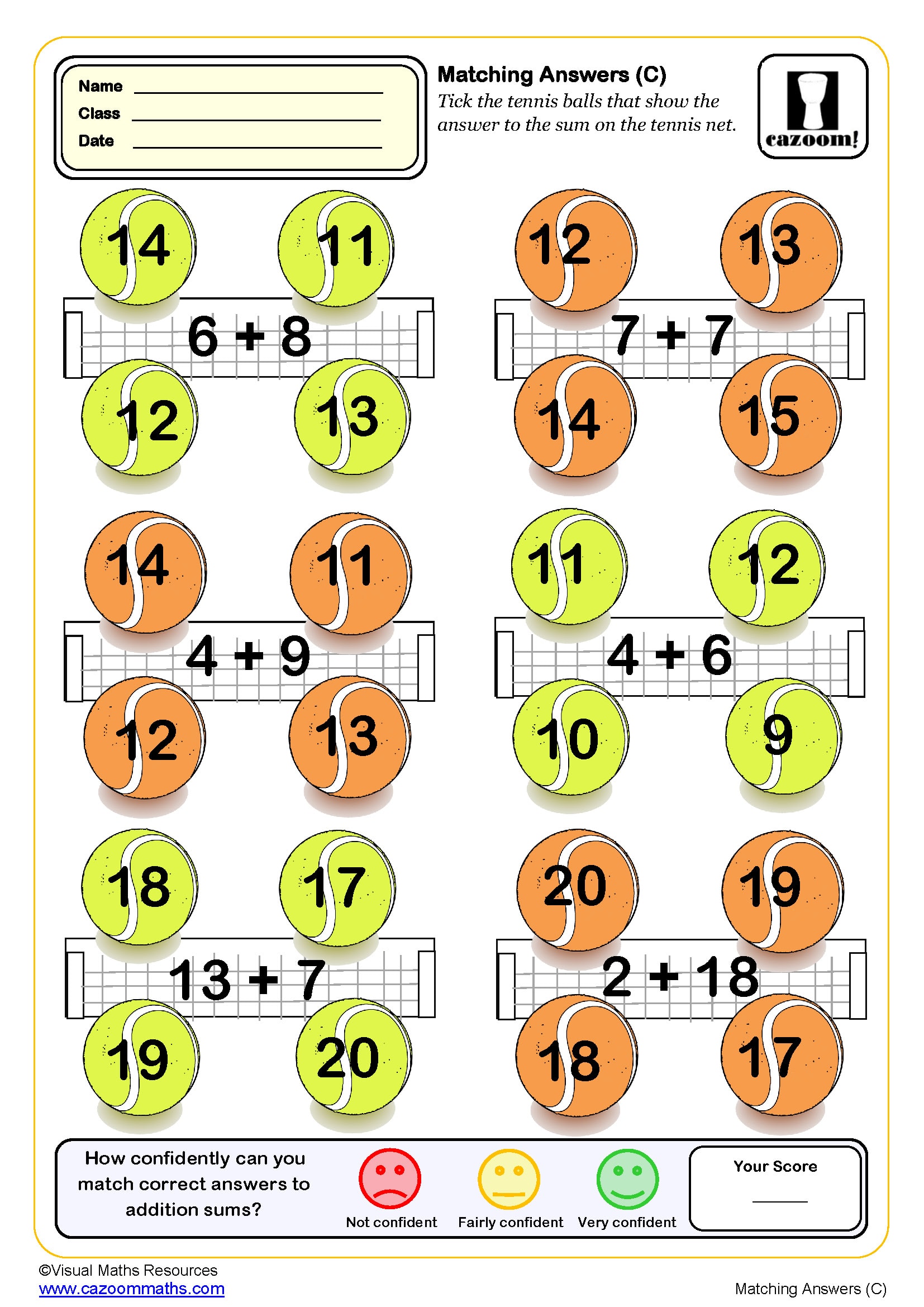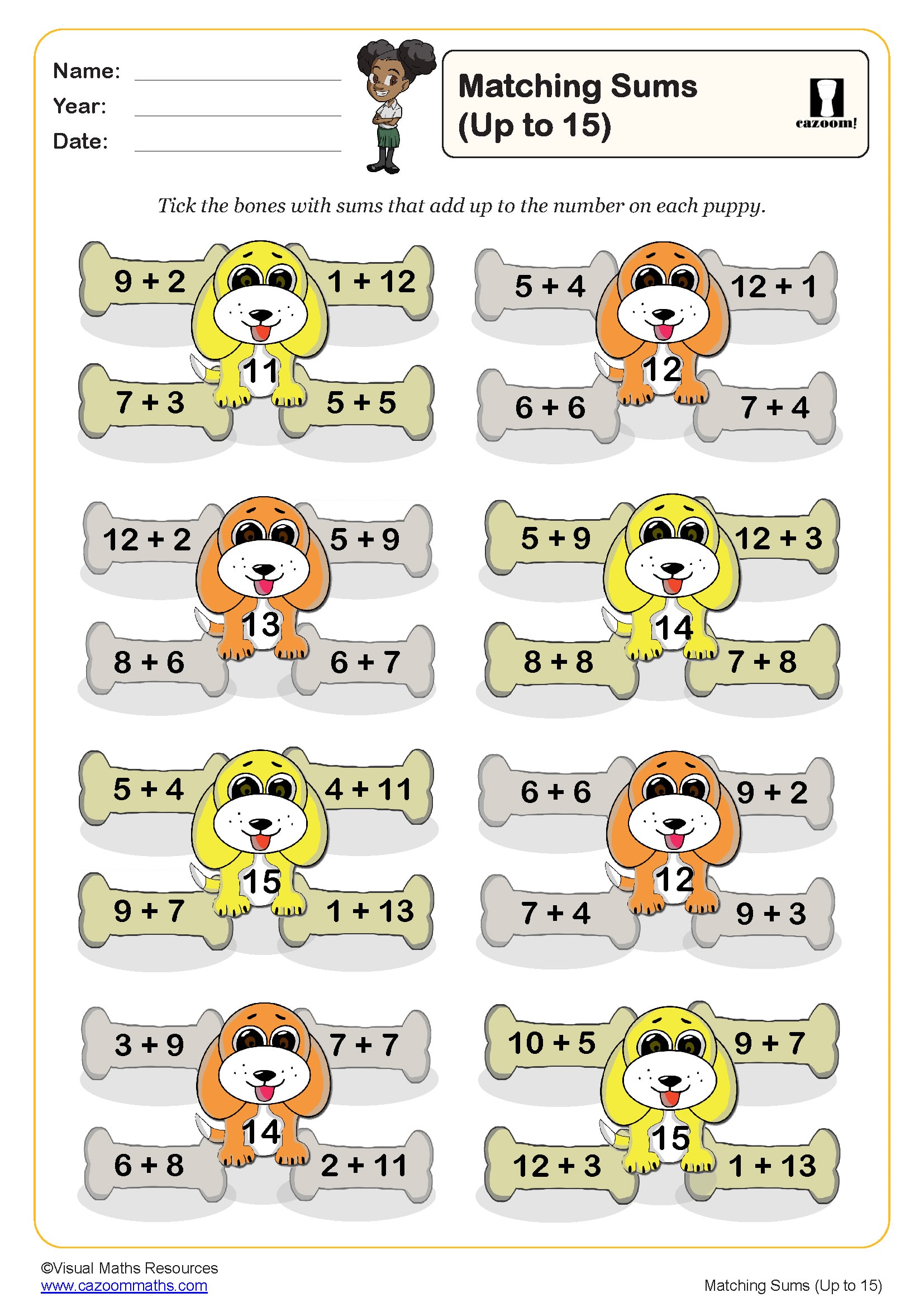Year 1 Adding to a Two Digit Number Worksheets
Printable PDF Year 1 Two-Digit Addition Worksheets with Answers
Check out and download our year 1 adding 2-digit numbers questions, which will improve your students’ knowledge of various number calculations related to sums, for example- Addition Grids, Matching sums, Matching Answers, etc. All of our maths resources are custom-made and created in an easy-to-download and printable PDF format, and each of them includes separate answer sheets as well. All of the Cazoom Maths worksheets are completely expert-made to help your kids in KS1 better understand and practise basic number equations.
What is the Core Concept of Adding to 2 Digit Numbers
Adding to two-digit numbers usually means combining a two-digit number with another number. Children typically start by adding single digits to numbers like 23 or 45. This skill builds on their knowledge of single-digit addition. They learn to work with tens and units systematically.
Resources included in our Adding to Single-Digit Numbers Worksheets are- Addition Grids, Matching Sums, Matching Answers, etc.
Why Are These Resources Important
These worksheets develop crucial number skills that children need for advanced mathematics. Adding to two-digit numbers introduces place value concepts early in their education. Regular practice builds confidence and mathematical fluency in young learners. Strong foundations in two-digit addition support all future calculation work effectively.
• Develops advanced number skills
• Introduces place value concepts
• Builds mathematical confidence
• Supports future learning progression
Real Life Use of Adding Two-Digit Numbers
Children encounter two-digit addition in many everyday situations throughout their daily lives. Counting money involves adding coins and notes to reach specific totals. Shopping trips require adding the prices of multiple items together accurately. These practical applications make mathematical learning meaningful and relevant for young children.
• Money counting and shopping
• Collecting and trading cards
• Board games with scoring
• Age calculations and birthdays


